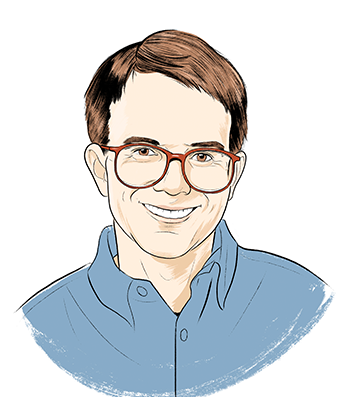Eric Cornell
2001 Nobel Prize in Physics

NIST Fellow Eric A. Cornell received the 2001 Nobel Prize in Physics for creating a never-before-seen state of matter: the Bose-Einstein condensate.
Cornell and University of Colorado physicist Carl Wieman did the groundbreaking experiment at JILA, a joint institute of NIST and the University of Colorado Boulder. In June 1995, after five years of focused effort, Cornell and Wieman’s group created the world’s first Bose-Einstein condensate (BEC), a new form of matter in which ultracold atoms coalesce into a single “superatom” with uniform properties. In papers that were published in 1924 and 1925, Albert Einstein predicted that BEC could exist, building on the work of Indian physicist Satyendra Nath Bose. It would be another 70 years until experimental physicists actually created the BEC in the lab.
Cornell shared the prize with Wieman and with Massachusetts Institute of Technology physicist Wolfgang Ketterle, who also performed seminal work in BECs starting later in 1995.
These pages consider Eric Cornell’s 2001 Nobel Prize in more depth by exploring the following questions:
- Who is Eric Cornell, and how did he get involved with the science that led to the Nobel Prize?
- Why were scientists in hot pursuit of ultracold matter?
- How did the discovery unfold? Was there a “eureka” moment?
- What has been the legacy of the Nobel Prize-winning effort?
“Eric is one of these people who is extraordinarily deep. Quiet but a deep thinker. You can engage with him and learn a lot from him.”
– Carl Williams, former deputy director, NIST Physical Measurement Laboratory

